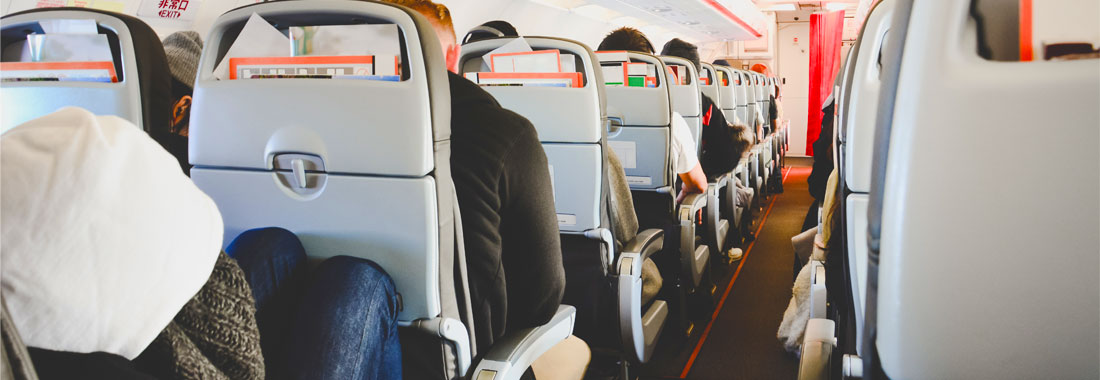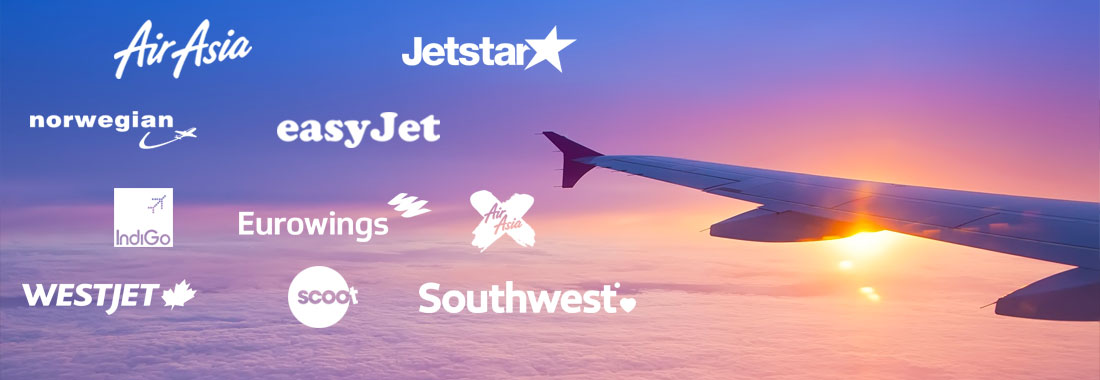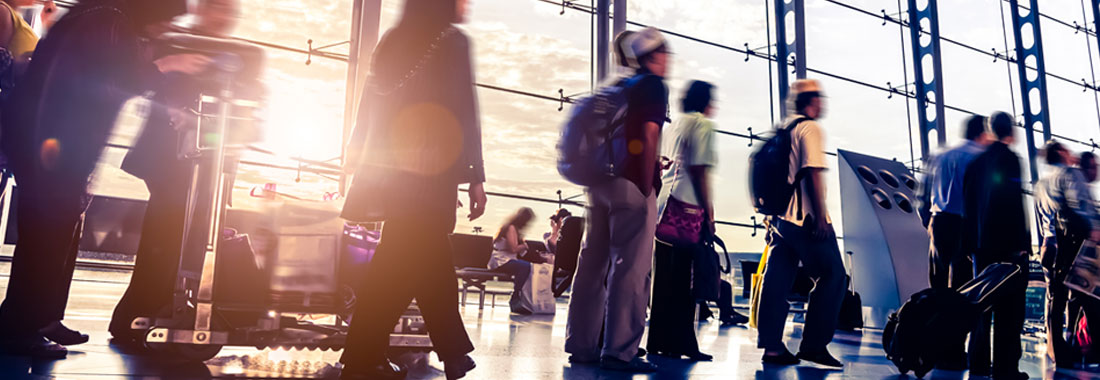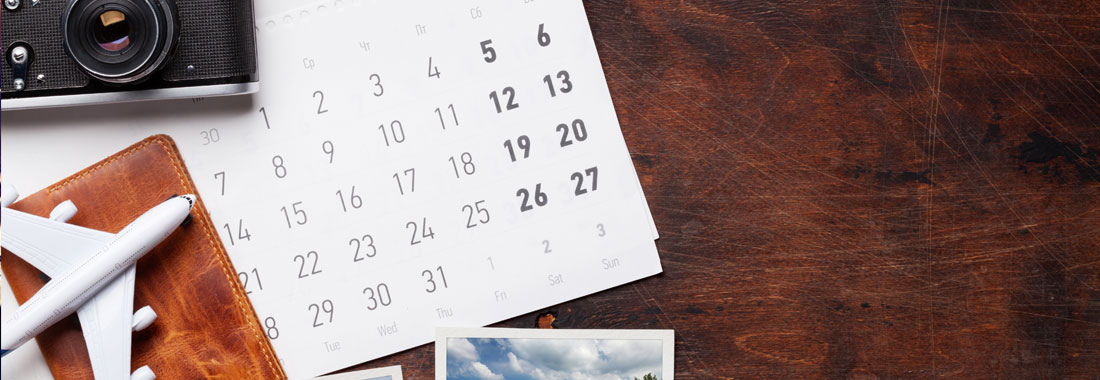
Everyone wants to know how to travel cheaply. They want to fly for as little money as possible, which is why so many discount airlines have popped up all over the world in the last decade or so to help travelers afford cheap vacations.
As an inveterate
In short: Discount airlines are a grab-bag of good, bad and hideous. They can turn a cheap travel destination into a dream vacation … or they can make the trip entirely unenjoyable.
Before you book a discount airline simply simply because it’s a cheap flight, you need to know what you’re signing up for. So, here are eight facts you need to know before you book a trip on a discount airline.
This article will cover
- Fact #1: Discount Airlines Fly on Every Continent
- Fact #2: Budget Airlines Regularly Fly International Routes – Even Long-Haul Routes — to Cheap Travel Destinations
- Fact #3: Many Budget Airlines are Very Good and Very Safe … But Some I Will Never Fly Again
- Fact #4: You Have to Search for the Best Fares
- Fact #5: You’ll Have to Pay for Lots of Extras
- Fact #6: You Need to be Flexible About Your Destination Airport
- Fact #7: Be Flexible on Travel Dates
- Fact #8: Enroll in the Frequent-Flyer Program – Long Before Your Trip
Fact #1: Discount Airlines Fly on Every Continent
Well, they don’t fly in Antarctica, but discount airlines are flying across all the six, habitable continents.

Most American travelers in search of budget travel and cheap travel destinations know about Southwest, Spirit, Allegiant and the various other discount U.S. airlines. But you will find budget airlines all over the place outside the U.S. In particular, Europe and Asia are packed with discount airlines – including many good ones. Africa, India and the Middle East now have a rash of low-cost carriers, too, as the middle class begins to grow in those regions.
Knowing which discount carriers operate in which countries and regions will help you find the best prices, and allow you to do some research on the quality of the
Wikipedia has page listing the world’s discount airlines by continent and country.
This information will help you in your quest to book budget travel because, while some airfare search engines includes some budget carriers in their searches, no search engine includes all of them … and many airfare search engines include none.
And if you want to know about safety, check out the annual European Union Air Safety List. You will know which airlines to avoid, no matter how cheap their fares might be.
Fact #2: Budget Airlines Regularly Fly International Routes – Even Long-Haul Routes — to Cheap Travel Destinations
Only in recent years did Southwest begin flying outside America’s borders. Now, the U.S. budget airline is hauling Americans back and forth on inexpensive vacations to various destinations in Mexico, Belize, Costa Rica, Jamaica, the Bahamas and elsewhere.

The U.S. market for domestic flights is so large, and the country is so large, that a discount airline can make a good business without ever leaving America. Overseas, however, that’s not typically the case. Many countries are so small that there’s not a lot of demand for domestic flights, though there’s great demand for
Thus, just about all the budget carriers overseas are flying international routes. And that’s great for money-conscious travelers because it means we can flit between Vietnam and Thailand, Australia and Malaysia, France and Croatia – hundreds, if not thousands of routes – at steeply discounted prices.
Though most travelers tend to think of budget airlines as generally short- to medium-haul carriers, many have been expanding in recent years to include long-haul routes. Norwegian Airlines, for instance, flies from Europe to Los Angeles. AirAsia X flies to Honolulu, Hawaii, from Singapore. Air Canada Rouge flies Toronto, Canada, to Lima, Peru.
Fact #3: Many Budget Airlines are Very Good and Very Safe … But Some I Will Never Fly Again
I’ve flown numerous budget airline in the U.S., Europe and Asia.
Some of them I will gladly fly again. Southwest is great at what it does. Norwegian Air was very good on a flight between Stockholm, Sweden, and Fort Lauderdale, Florida.
Vueling, the Spanish low-cost carrier, is comfortable enough on flights through Europe that I would happily fly that carrier again.

However, there are some – and I will specifically mention Ireland’s Ryanair – that are simply not worth the hassle, regardless of cost. I won’t say anything more than to note that there are (many) very good reasons Ryanair has been rated “worst airline” for numerous consecutive years.
And there are budget carriers in certain countries where safety standards are subpar.
The 10 best discount carries, according to flyers, are:
- AirAsia (Asia)
- Norwegian Air (Europe)
- EasyJet (Europe)
- Jetstar Airway (Australia/Asia)
- AirAsia X (Asia, long-haul)
- WestJet (Canada)
- IndiGo (India)
- Southwest Airlines (U.S.)
- Eurowings (Europe)
- Scoot (Asia)
Fact #4: You Have to Search for the Best Fares
The internet has done wonders for opening up the world of budget travel for travelers in search of inexpensive vacations to cheap travel destinations. Three of the better airfare search engines I’ve found for seeking budget-airline fares (and, again, they are not complete at what they do) include:
But like I said, no search engine has yet mastered the art of rooting through the fare structures for all the world’s discount airlines, though some are pretty decent at finding a goodly number of discount fares.

What this means, however, is that even after you have scoured the usual airfare websites, you still need to search airfares for the budget airlines that serve the
The big question: How do I know what airlines serve which airport?
The easiest way is to visit the website of the airport you want to fly into. Most airports these days have a website that lists all the departures and arrivals, and most list all the airlines serving that airport. It’s a simple task to eyeball that list to find the budget airlines. You will likely know the major carriers when you see them (Delta, United, Qantas, British Airways, Singapore Airlines, etc.) Those that you don’t know, simply Google them and you will quickly know if it’s a major international or domestic airline, or a budget carrier.
From there, you can visit each budget carrier’s website to find the fares for whatever route you want to fly.
That’s the only way you know you’re getting the best possible fare on that route.
Fact #5: You’ll Have to Pay for Lots of Extras
Budget airlines are often “budget” simply because the price they quote for flying you from Point A to Point B is so much cheaper than a major carrier. However, with most discount airlines, that price isn’t the real price you pay. Want to bring some clothes with you? You will have to pay a luggage fee.

Packed too many clothes? You will have to pay an overweight baggage fee. Do you get hungry? You will have to pay to buy a meal on board. Any chance you might get thirsty? Some budget airlines even charge for water. Don’t want to be stuck in a middle seat? You will have to pay for the right to select the seat you want.
Want to get on the plane, even after you’ve already paid for your ticket? Some airlines (I’m looking at you Ryanair) charge a re-issue fee (roughly $25!) if you arrive at the airport without a pre-printed boarding pass.
Yes, many major airlines also charge a bunch of added fees. But that’s not the point. The point is you need to be fully aware of all the charges you will face on any budget airline so that you know what your costs are … or so that you know to pack wisely, or to bring a snack or a bottle of water on board.
Always read an
Fact #6: You Need to be Flexible About Your Destination Airport
We all want to fly into the most-convenient airport. But with airfares, convenience and price are not always compatible.
Many (most) budget airlines fly to out-of-the-way airports because landing fees (the fees the airline must pay to land its plane) are lower, allowing that carrier to charge you lower fees. That’s not always true, since some discount airlines do serve major airports.

Still, you need to know the airports that serve the destination you want to visit so that you can find out what airlines serve those airports. London, for instance, has Heathrow (the primary airport for all of England), but it also has Gatwick, Luton, Stanstead and City.
The easiest way to find out what airports serve a particular city is to Google this phrase: “Airports serving [X].” Fill in “X” with your desired destination city, and up will pop a list of all the nearby airports.
The cost savings can be substantial for doing this little bit of legwork. You might, of course, need to pay for a taxi, bus or train into the city, but even with that added cost you are typically far ahead of the game in terms of what you would have paid on a major airline flying to a major hub airport.
You might also need to be flexible about your destination city. If you want to go to Miami, you might actually find cheaper prices flying into nearby Fort Lauderdale or West Palm Beach. Find out what other cities have airports near to where you want to ultimately be, and search them as well for low-price tickets.
Fact #7: Be Flexible on Travel Dates
This goes for any air travel you do: To the degree it’s possible, be flexible on your travel dates. Everyone traveling on holiday typically wants to leave Friday night or Saturday morning and return the following Sunday (or Sunday two weeks hence, if it’s an annual, two-week vacation).

Airlines obviously know this, and they price tickets accordingly to maximize the profits they collect from the demand they know exists.
So, learn to be creative with your vacation schedule.
Why not leave on a Thursday (often the lowest-priced travel day) and return on a Wednesday? You still miss just five days of work … but you get a full weekend at your destination instead of two partial weekends (consumed by decompressing from the flight and packing for the return trip) and the benefit of fares that can be dramatically cheaper, even on discount carriers.
Fact #8: Enroll in the Frequent-Flyer Program – Long Before Your Trip
Not all discount airlines offer
Yet, many budget airlines do offer frequent-flyer programs or other loyalty programs, and you should absolutely sign up for those on carriers you expect to fly, even before you ever book your trip.

There are a couple of reasons for this.
1. Airlines routinely send to their loyalty-program members alerts regarding fare sales, either broadly across that airline’s route network, or on specific routes it wants to promote. It’s a great way to lock in an even-cheaper ticket on a route you want to fly.
2. By accumulating miles on carriers you expect to fly regularly, you will be able to redeem your miles for free tickets in the future, which effectively lowers the cost of all your combined flights.
And if a particular budget airline offers a
Conclusion
The best budget carriers I’ve flown: I have to give props to Norwegian and Romania’s Blue Air. Blue isn’t a carrier most travelers have heard off, because its home base is a (really beautiful) Eastern European country that doesn’t see an excess of visitors. But Blue does a nice job with its service on the routes it operates. I’ll also say that AirAsia has a really good product in Southeast Asia, and I’m a fan of Bangkok Airways, which calls itself Thailand’s “boutique airline.”
The worst? I refuse to be treated like cattle. I will never fly Ryanair, and I would strenuously look for any other option when it comes to Hungary’s Wizz Air, which flies all over Europe.
Travel has its own set of built-in hassles, so the last thing you want is to compound that by booking yourself on a budget airline that is going to elevate your stress level.
That said, if you find a good budget airline, with a quality product and that treats its customers well, then you’ve found a great way to travel cheap and afford inexpensive vacations.
And if you have your favorite budget airline, tell us about it below in the comment section — and let us know what makes it your favorite.
